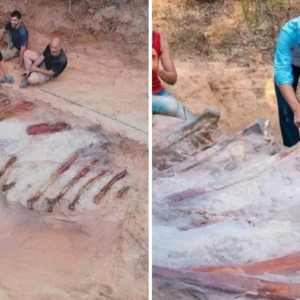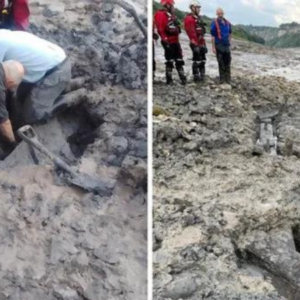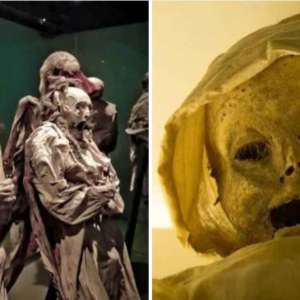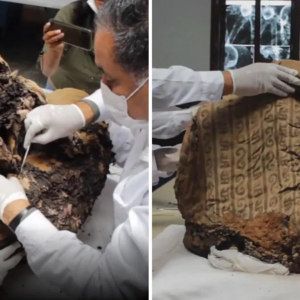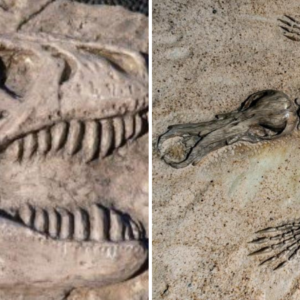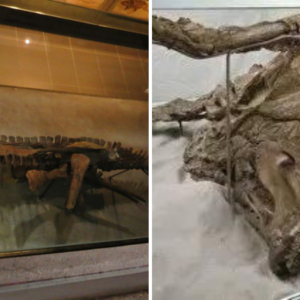Unsolved Murder and Hidden Heritage in Egypt’s Buried and Layer Pyramids
Beneath the sun scorched sands of the Giza Necropolis sleeps the enchanted ruins of ancient Egyptian civilization. While the secretive Sphinx and the spectacular Great Pyramid rush to mind, there are many tombs and pyramids most have never heard of. These monuments and tombs could simply be lost in the myriad of magnificent historical treasures, but then again, maybe they are not only buried beneath the sands of time and of the desert, but even deeper still. Perhaps they’re also figuratively buried by authorities on account of what they might reveal.

The remains of the Pyramid of Sekhemkhet, also known as the Buried Pyramid. (Pottery Fan / CC BY-SA 3.0 )
The moniker “Buried Pyramid” is not used for literary effect. This is its actual name due to the fact that it was seemingly an incomplete construction of a step pyramid with the base barely rising above ground level, hence the name Buried Pyramid. It is also known as the Pyramid of Sekhmekhet after the pharaoh Sekhmekhet Djoserty, second ruler of the Third Dynasty from 2686 to 2613 BC. It is very near to, and similar to, the much more well known Step Pyramid of Saqqara, which was built for Sekhmekhet’s predecessor Djoser. The Buried Pyramid did have its fifteen minutes of fame in the early fifties when it was first discovered.
In 1951, Egyptologist Zakaria Goneim was participating in excavations at the Unas Complex when he found what turned out to be the wall of another complex, and eventually he uncovered the pyramid at the complex’s center. Over the course of subsequent excavations, Goneim unearthed artifacts such as beads, cosmetic cases, jars, and golden jewelry inscribed with Sekhmekhet’s name.
After three years, on May 31, 1954, he discovered a sarcophagus with the alabaster seals perfectly in tact and funerary wreaths adorning the lid, all of which is clear indication of an undisturbed burial. The media was alerted generating significant fascination and interest, but suspiciously, an entire month went by before the sarcophagus was opened in front of cameras, journalists, and state officials. Supposedly, the delay in opening the sarcophagus was due to some trouble in removing the lid (a minor challenge for a veteran archaeologist like Goneim).

Zakaria Goneim by the alabaster sarcophagus, pointing out the preserved funeral wreath. Dummy burial or pharaoh fiasco, the empty sarcophagus would be the beginning of the end for Goneim. ( Answers in Genesis )
On June 26, 1954 the day had finally arrived, but in a bizarre twist, despite the sarcophagus having surely been sealed and undisturbed for millennia, when it was opened for the cameras and the press it was empty. There was understandable, collective disappointment and some headlines criticized Goneim, but interestingly, among the state officials present was the then Egyptian President Nᴀsser, who actually defended Goneim and praised him for his efforts.
Goneim went on to publish his book The Buried Pyramid and also went on a corresponding lecture tour of the United States, all of which was very successful. But around this same time, for reasons that are unclear, Goneim was being targeted by the same Egyptian state officials present at the excavation.
Ancient Origins – Lost Great Pyramid Relic Surfaces in a Cigar Box in Scotland!



Each time Goneim returned home to Egypt he was subjected to interrogation by the authorities and he was under constant surveillance. To reiterate, there was no discernable crime or wrongdoing of any kind. After already having been subjected to this for sometime, Goneim was officially accused of smuggling a valuable artifact out of the country.
At this point, the stalking and interrogations intensified even though his reputation was impeccable and other esteemed Egyptologist colleagues, such as the famed Jean-Phillipe Lauer, were steadfastly defending him. Lauer managed to find the relic Goneim was accused of smuggling, hidden away in the bowels of the Egyptian Museum. But just as Goneim was about to be publicly vindicated for a crime he never committed, his lifeless body was found floating in the Nile. The case was never definitively solved. Some suggest it was suicide, a theory which his friends and family found offensive and vehemently reject. Others believe it was some kind of conspiracy.
Lauer took up the torch of his friend and colleague, and in 1963 he did more excavations at the complex. This second excavation cleared more subterranean chambers/tunnels and discovered more artifacts similar to those Goneim had discovered, including animal bones, jars, and jewelry, but no mummy was ever officially discovered. Before the entire complex could be unearthed, all study of the site was halted and no further research has been done on the site since. Even though, according to the official narrative, Sekhmekhet’s royal tomb must be interred close by within the complex. Currently, the buried pyramid site is open to the public; however, access to the substructures is off limits.

The statue of Seneb with his family housed at the Cairo Museum has led Egyptologists to believe that Seneb suffered from achondroplasia, one of the features of which is dwarfism. (Wellcome Images / CC BY 4.0 )
Twenty-five years before Goneim uncovered the Buried Pyramid, he participated in excavating what seems to have been a section of the Giza Necropolis dedicated to elite dwarves. Between 1925 and 1926, Goneim and his colleagues located the tomb of Seneb, a wealthy advisor to Khufu and Djeder, whose lavish mastaba tomb indicated that he was of extremely high status.
A statue of Seneb and his family is currently on display in the Cairo Museum. The statue (among other artistic depictions) leads Egyptologists to strongly suspect that Seneb suffered from the disability achondroplasia. Decades later, surrounding mastaba tombs were also found to contain little people of high status, like Pereniankh, Djeho, and KhnumH๏τep. It is further speculated that Pereniankh may have been the father of Seneb.
The fact that Pharaohs granted dwarves extremely high status is not entirely unique, as other ancient cultures held little people in high regard and many other royal courts included them among their ranks. What is strange, however, is that all of these tombs were supposedly looted of the skeletons except for one, that of Pereniankh. But even this mummy or skeleton seems to have been subsequently hidden away.
Grave robbers are typically after the grave goods not the mummy itself, and while its certainly not beyond them to swipe the entirety of the remains, it’s more likely that the ravaged remains would be scattered about the tomb. Furthermore, looter activity cannot explain the missing Pereniankh remains, which would surely make for intriguing study and a crowd pleasing display.

The Layer Pyramid, located within the Zawiyet El Aryan necropolis. ( Public domain )
Not far from the Buried Pyramid and the Step Pyramid of Djoser, within the necropolis of Zawiyet El Aryan, rests the ruins of the Layer Pyramid. This is another very similar step pyramid of the Third Dynasty whose excavation history is odd. John Shae Perring was the first to investigate the pyramid in 1839, and it was intermittently studied over the next sixty years by two different teams.
Interest was renewed once again between 1900 to 1910 by another pair of teams, most notable of which was the Italian Egyptologist and architect Alessandro Barsanti. After all these excavations, no artifacts have been discovered and the reports on the subterranean pᴀssages are in direct disagreement with each other.
Not only do the official diagrams of the substructure conflict with one another, but the experts cannot even agree on some very fundamental aspects of the structure. The majority faction insists that the pyramid was never completed, possibly the result of the pharaoh for whom it was intended dying prematurely.
However, this view is not unanimous, as other experts such as the German Egyptologist Rainer Stadelmann, believe that the pyramid was indeed completed. The primary underground chamber, that is supposed to have been the burial chamber of the king, is also problematic because the gallery leading to it could not have had a sarcophagus transported through it due to its narrow dimensions. Furthermore, above this chamber is a mᴀssive gallery that is missing entirely from the report of the later 1910 excavation.

The Layer Pyramid is in an area designated a restricted military zone in 1970. (Google Earth / Alan Fides )
In 1970, this random patch of desert was designated a restricted military zone, making modern investigation and public access impossible. Perhaps the strangest fact regarding the Layer Pyramid, is that all these subterranean pᴀssages, chambers, and galleries have been deliberately filled in with sand.
Another oddity worth pointing out is that this “military zone” is small patch of desert in the center of Egypt with no militaristic or strategic significance. It’s quite far away from any border and the only significance of the area at all seems to be the historically significant ruins beneath the sand. Simple Google Earth observations indicate little if any real military presence, aside from a few small structures, meanwhile hundreds of miles away, in much more potentially hostile regions, are sites teaming with tourists and archaeologists.
In 1979, UNESCO officially forged the World Heritage Site: “ Memphis and Its Necropolis – The Pyramid Fields from Giza to Dahshur.” This definition places the Layer and Buried Pyramids (and this military zone) right smack in the center of this World Heritage Site. However, keep in mind the definition of a World Heritage Site, which is “a natural or man-made site, area, or structure recognized as being of outstanding international importance and therefore deserving special protection.”
Needless to say, it defeats the purpose of a World Heritage Site if it overlaps with a restricted military area, just as it defeats the archaeological purpose to fill in sites that took years to be excavated. The restrictions only apply to this one little piece of a vast desert, the remainder of which is fully accessible to the public all the way up to the borders.
Why was Goneim being persecuted and why was he falsely accused of smuggling artifacts after a quarter century of upstanding work? Was Zakaria Goneim murdered, and if so, who had motivation to do so? Is there something in his book or that he was revealing in his lectures that provoked the authorities to persecute him?
Was the sarcophagus of the Buried Pyramid truly empty, or was the suspicious month delay an effort to conceal its contents? How can multiple archaeological teams come up with such radically conflicting diagrams of the Layer Pyramid’s substructure? Why would years of excavation be done only to be refilled with sand? Why would a military zone be created atop important archaeological sites when the area has no strategic value?
It is of course entirely possible that Goneim committed suicide. However, it seems more likely that the he was murdered, and clearly, there was hostility towards him from the state. Never before in the history of Egyptology has a sarcophagus been discovered with the alabaster seals in tact and with funerary wreaths adorning it, only to be empty. The outright denial of the existence of chambers is also an ongoing theme in Egyptian archaeology.
But that’s not all. In 2017, Japanese physicists utilizing cutting edge technology discovered a mᴀssive void within the Great Pyramid , but despite the undeniable implications of this hidden chamber, Egyptologists were quick to deny their claims. “There’s zero chance of hidden burial chambers,” said Egyptologist Aidon Dodson from the University of Bristol. Clearly, Dodson’s expertise is not in statistical probabilities, but this obtuse position of denial, suppression, and cognitive dissonance is par for the course in Egyptology, and has been for over a century.
Top image: The case of Zakaria Goneim and the Buried Pyramid, as well as other hidden heritage and monuments, makes one wonder what secret history lies beneath the sand. Source: mellouk / Adobe Stock
By Mark Andrew Carpenter
Reisner, G.A. and Fisher, C.S. December 1911. “The Work of the Harvard University – Museum of Fine Arts Egyptian Expedition (pyramid of Zawiyet el-Aryan)” in Bulletin of the Museum of Fine Arts (BMFA) , 9, Boston, No. 54 Vol. IX, pp. 54-59.
Kozma, C. 2006. “Dwarfs in Ancient Egypt” in American Journal of Medical Genetics 140A, pp. 303-311.
Lehner, Mark. 1996 “Z500 and the Layer Pyramid of Zawiyet El Aryan” in Studies in Honor of William Kelly Simpson , Volume 2. Boston: Museum of Fine Arts.
Lehner, Mark. 2008. The Complete Pyramid – Solving the Ancient Mysteries . London: Thames & Hudson, pp. 84, 94, 96.
Marchant, Jo. November, 2 2017. “Cosmic-ray Particles Reveal Secret Chamber in Egypt’s Great Pyramid” in Nature. Available at: https://www.nature.com/news/cosmic-ray-particles-reveal-secret-chamber-in-egypt-s-great-pyramid-1.22939
